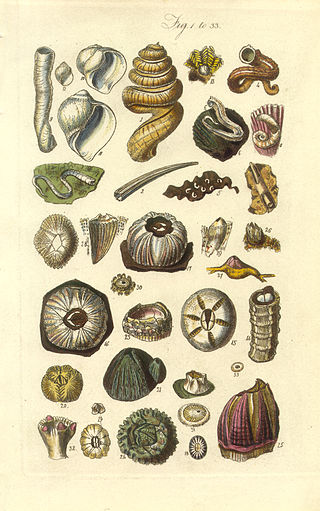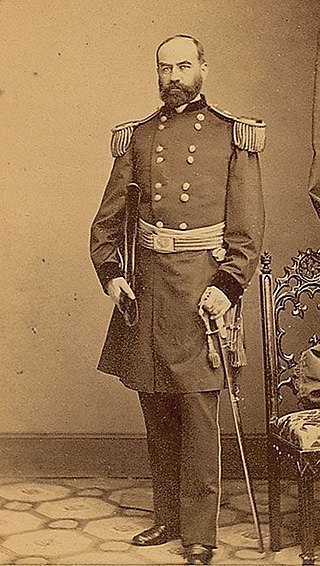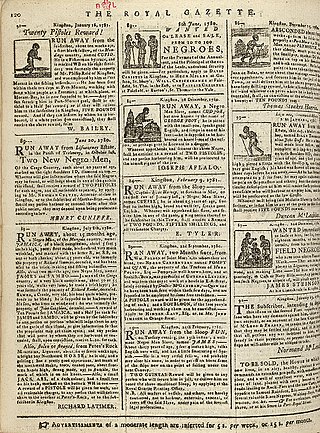
Major-General Sir Herbert Benjamin EdwardesDCL was a British administrator, soldier, and statesman active in the Punjab region of British India. He is best known as the "Hero of Multan" for his pivotal role in securing British victory in the Second Anglo-Sikh War.

Archibald Henry SayceFRAS was a pioneer British Assyriologist and linguist, who held a chair as Professor of Assyriology at the University of Oxford from 1891 to 1919. He was able to write in at least twenty ancient and modern languages, and was known for his emphasis on the importance of archaeological and monumental evidence in linguistic research. He was a contributor to articles in the 9th, 10th and 11th editions of the Encyclopædia Britannica.

George Brettingham Sowerby I was a British naturalist, illustrator and conchologist.

Henry Bell Van Rensselaer was an American military officer in the Union Army during the American Civil War, and a politician who served in the United States Congress as a Representative from the state of New York.

Cockburn is a Scottish surname that originated in the Borders region of the Scottish Lowlands. In the United States most branches of the same family have adopted the simplified spelling 'Coburn'; other branches have altered the name slightly to 'Cogburn'. The French branch of the family uses the spelling 'de Cockborne', with the middle "ck" being pronounced.

William Ramsay McNab was a Scottish physician and botanist.

Eccles is a village and agricultural parish near Kelso in Berwickshire in the Scottish Borders area of Scotland. The village is conjoined with Birgham and Leitholm.
James Bruce (1691–1749) was the Chief Justice of Barbados and the son of Alexander Bruce of Gartlet. Through the paternal line James Bruce was a direct descendant of Thomas Bruce 1st Baron of Clackmannan.

Captain Augustus Leveson-Gower served in the Royal Navy during the French Revolutionary war.
Dr Handyside Edgar FRSE (1754-1806) was a Scottish physician who settled in Jamaica as both doctor and plantation owner. On his death a famous Scottish legal case was heard debating the legal responsibilities of debts raised in one country being settled in another.
The Munros of Culcairn were a minor noble Scottish family and a branch of the ancient Clan Munro, a Scottish clan of the Scottish Highlands. Their seat was at Culcairn which is on the east side of Allt Graad/River Glass in the parish of Kiltearn.
James Laing (c.1749–1831) was a Scottish doctor and slave plantation owner in Dominica.

Alexander Aikman was a Scottish printer, newspaper publisher, planter, and member of Jamaica's House of Assembly. From 1805 to 1825, he was a member of the House of Assembly as the representative of Saint George parish.
Francis Rose was a plantation owner in Jamaica. He was active in the politics of the island and was elected to serve in the House of Assembly of Jamaica multiple times, becoming speaker in 1702, and later president of the Council of Jamaica.
Walter Augustus Feurtado was a Jamaican accountant, freemason, genealogist, and author whose biographical guide to the Official and Other Personages of Jamaica, from 1655 to 1790. has become an important source of biographical information for Jamaica.
The Receiver General of Jamaica was the public official in Jamaica responsible for receiving and disbursing money of the Government of Jamaica.
Louisa Wells Aikman, also known as Louisa Susannah Aikman, was an American author and music score collector. She is best known for her book, The journal of a voyage from Charleston, S.C., to London.
Sir Henry Alfred Alford Nicholls was a physician, disease specialist, horticulturist, zoologist and legislator in, and publicist for Dominica for over 50 years. He published on a wide variety of topics and was awarded a knighthood for his services just before his death.
Major General Daniel Bolton was an English military engineer of the Corps of Royal Engineers, who served in the Peninsular War (1813–1814), Netherlands Campaign (1814–1815), army of occupation in France (1815–1818), in Canada (1823–1843), particularly as superintending engineer in the construction of the Rideau Canal (1832–1843) and as Commanding Royal Engineer at Harwich (1846–1847), New Zealand (1847–1853) and Cape of Good Hope (1855–1860).










